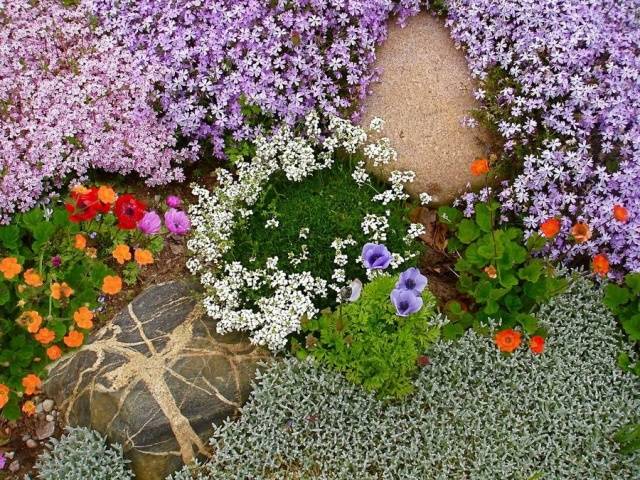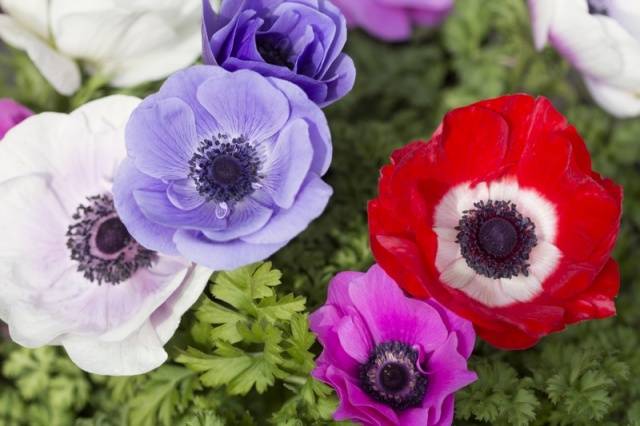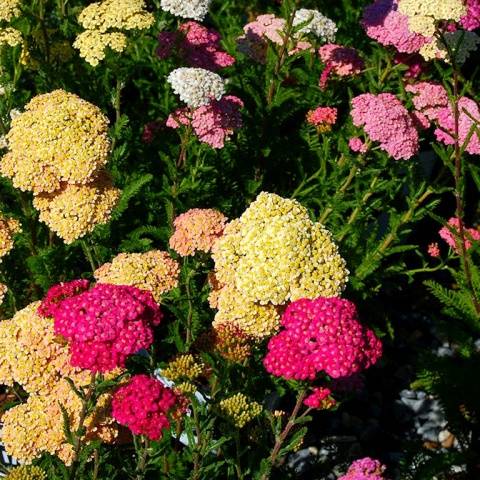Content
Lovely beautiful perennials for the garden lies, first of all, in the fact that these flowers do not have to be planted every season - it is enough to plant them once in the front garden and enjoy their beauty and fragrance for several years. Blooming perennials no worse than annual plants; on the contrary, these flowers have a number of advantages.
You can learn about the characteristics of perennial flowers from this article, as well as familiarize yourself with photos and names of perennials in the garden.
Flowers for the garden: perennials
Garden flower perennial in landscape designs it is no less common than ordinary annual plants. Perennials make excellent compositions; these flowers can be planted in flowerpots and pots, or combined with other plants in flower beds and front gardens.
Herbaceous perennials are often planted in the local area, using them as a green carpet or lawn. Shade-tolerant varieties are quite suitable for decorating a garden, because even under the canopy of large trees such perennials will feel quite comfortable. And flowering varieties of plants are suitable for absolutely any area - they are very decorative.
You can learn about ways to design flower beds and flower beds using perennials in numerous videos on the topic of landscape design.
Benefits of perennials
Compared to annual flowers, perennials have a number of advantages, including:
- They do not have to be planted annually - most varieties of such flowers can grow in one place without additional care for about three to four years.
- Perennial flowers are more unpretentious; they almost always do not require complex care - just water the bushes during drought and remove weeds.
- Perennials generally tolerate winter well. Such flowers do not need to be covered, only in the fall you will have to remove faded buds and excess greenery.
- A flowerbed decorated with perennials will delight the owner all season and will remain attractive for several more years.
- The gardener does not have to spend money on planting material every year, so perennials can also save money.
- Due to the fact that the root system of perennial flowers is well developed and already formed, perennials will be the first to bloom in the spring and, quite possibly, will become the last flowering plants in the garden during the autumn cold period.
Gardeners often exchange seedlings, thereby saving on the purchase of long-flowering plants. The exception is rare perennials, which are quite difficult to reproduce.
There are many varieties of perennial flowers; this article contains photos of the best perennial flowers for the garden.
What perennials can you safely plant in your garden?
Perennial plants for the garden are divided into several groups, flowers may vary:
- flowering period;
- duration of flowering;
- plant height;
- decorative (with or without inflorescences);
- having a pronounced floral aroma or odorless;
- whimsicality - perennials are divided into three groups, which differ in their requirements for care, replanting and preparation for the winter;
- shade-tolerant or sun-loving varieties;
- according to the method of reproduction.
The best varieties of perennial flowers will be presented below - every gardener will be able to use them in his garden, because these plants are suitable for decorating flower beds, edgings, and for planting in hanging plant pots or decorative pots (where it is recommended to use this or that variety, you can find out from video).
Anemone
This flower is characterized by the fact that in certain climatic conditions (if winters are too cold), it can also be grown as an annual crop.
The flowers are quite large, their diameter is 7-8 cm, the shades of the inflorescences can be different: purple, pink, blue or red.
Anemone tubers must be planted in fertilized soil, deepening them no more than 5 cm, and choosing sunny areas of the garden for planting. If the soil on the site is depleted, it will have to be fertilized at least twice per season. To do this, it is better to use combined fertilizers, combining mineral fertilizers with chemical elements.
Astilbe
A photograph of blooming astilbe will not leave anyone indifferent - this perennial is moderately tender and very persistent. Varieties of astilbe differ significantly from each other: these include different heights of bushes, decorativeness, and shade of inflorescences.In accordance with this, the methods of caring for and planting a perennial flower also differ.
The common qualities of all varieties of paniculate astilbe are the following:
- demanding on soil composition - the soil must be fertile;
- dislike of too bright sun - an excellent place for planting perennials is partial shade;
- regular watering;
- constant removal of faded panicles.
Therefore, in the summer, the perennial needs to be watered frequently and the soil mulched, and in the winter, the soil between the bushes should be covered with insulating material or spruce branches as insulation.
Badan
In videos about creating flower beds and flower arrangements, there is often a mention of bergenia. This perennial really has many advantages:
- Bergenia can be planted even in poor soil;
- on fertile soils the perennial blooms very profusely;
- the plant tolerates lack of sunlight well;
- Bergenia can be used to decorate any flower beds, rocky compositions and rosettes.
The weakness of bergenia is its susceptibility to fungal diseases. Especially in the spring, the plant is in dire need of fungicidal treatment, because roots that have overwintered under cover are often infected with fungal spores.
Delphinium
The flower beds decorated with delphinium are very beautiful. This perennial is sown with seeds; for a thick and lush row, you need to place the seeds quite close to each other, and sprinkle a thin layer of earth on top.
There are several varieties of this perennial: Persian delphiniums, holostem, hybrid or multi-flowered (its name speaks eloquently about the characteristics of each group).
The perennial needs frequent and abundant watering, but it is better to water the delphinium at the root so that the leaves remain dry - the plant is susceptible to powdery mildew. After watering, the soil between the bushes must be loosened, but this should be done carefully, because the roots of the perennial are close to the surface of the soil.
Clematis
These decorative perennials are liana plants, because clematis are able to curl around supports and create a hedge.
Clematis should be planted in soil with good drainage; sandy soils are most suitable for perennials. On other soils, it is imperative to arrange a system for the outflow of excess water.
The plant does not like low-lying areas and those places in the garden where groundwater lies close to the ground. The flower should be planted in places well lit by the sun; when planting, maintain a step of 200 cm between the bushes.
If everything is done correctly, clematis will delight the owner of the garden with its flowering for a very long time. The flower does not require complicated care, but it is better to cover the perennial for the winter.
Muscari
These flowers are called one of the most versatile perennials - they can grow anywhere. Muscari breed bulbs, prefer sunny places in the garden, like good watering, have a faint aroma of musk.
Today, several types of this perennial are known: there is Armenian muscari, Turgenev muscari, racemose, which has inflorescences in the form of clusters. Not only the shape of the flowers differs, but also their shade: muscari can be blue, blue, purple, or even combined.
Forget-me-not
Forget-me-not must be planted in moist soil, because this perennial loves water.That is why clay soils or lowlands are most suitable for planting flowers.
Forget-me-not blooms in May; you can recognize it by its small pale blue inflorescences. The plant can bloom well without special care. And after flowering, beautiful pointed leaves appear on the bushes.
Peony
Peonies are considered one of the most durable perennials - the bush is able to maintain its decorative effect for 50 years. The flower loves fertile soils and sunlight. It is often planted in parks and squares, since the plant does not need frequent care.
When planting peonies, you need to leave a small distance between the perennial and neighboring plants, because this flower is prone to overgrowth. Peonies will also have to be replanted periodically, removing the excess part of the bush.
Yarrow
The perennial is not only beautiful, yarrow is considered a medicinal plant and is often used in folk medicine. Small inflorescences are collected in large umbrellas, which can have different colors:
- pink;
- white;
- red;
- orange;
- burgundy;
- yellow.
The resistance of the plant is very high, because in nature, yarrow grows on rocky slopes, in the steppes or on rocks. The perennial tolerates temporary drought and sudden temperature changes well.
Phlox
Phlox are extremely beautiful, which is why they are very popular among gardeners and landscape decorators. Flowers love good soil, but if the soil on the site is too dense, the plant is planted on a layer of coarse sand, and in sandy soil it would be good to lay a layer of clay.
Phlox seedlings are planted shallowly - 2-3 cm deep into the ground.In order for the perennial to bloom profusely, choose a sunny area of the garden protected from the wind.
Results
The list of photos with the names of perennials cannot be considered complete - there are thousands of varieties of these flowers in nature. The advantages of perennial ornamental plants are obvious, and the main one is durability, because flower beds with such flowers are renewed only once every 4-6 years.
To learn how to combine plants and form beautiful flower beds, you can watch thematic videos with recommendations from experienced gardeners.

























